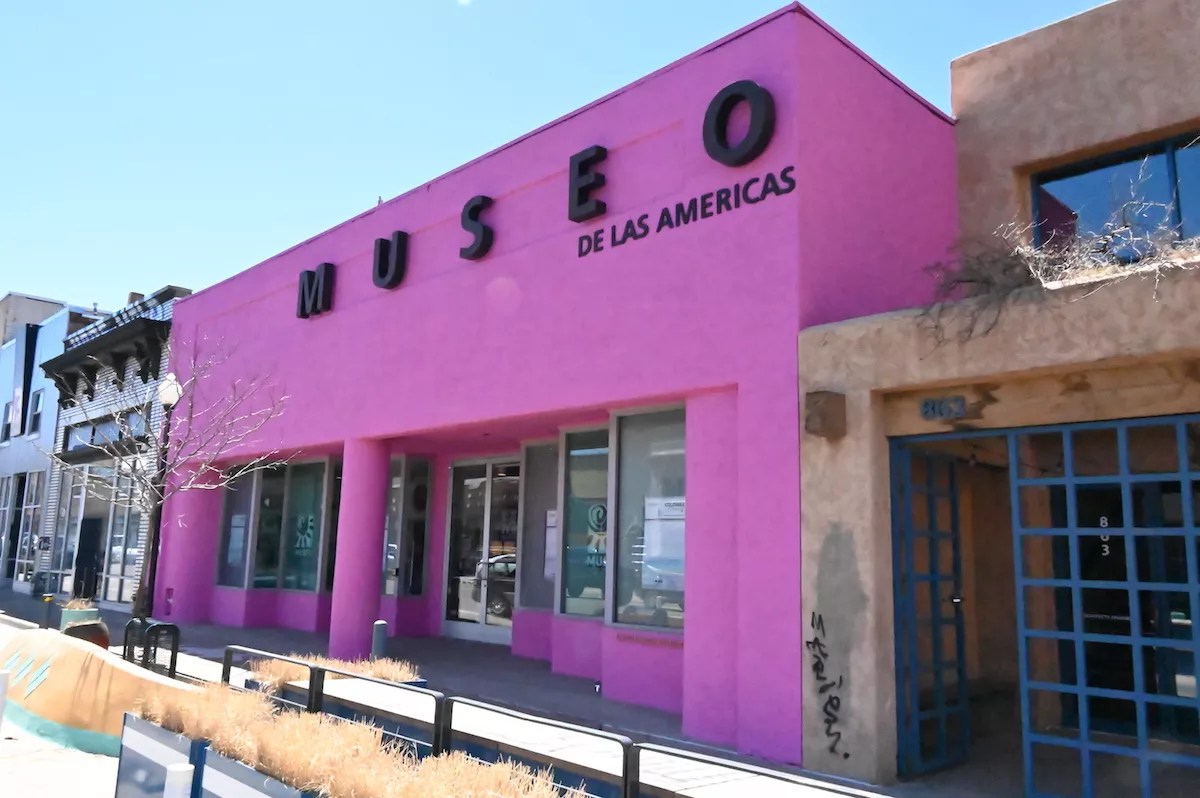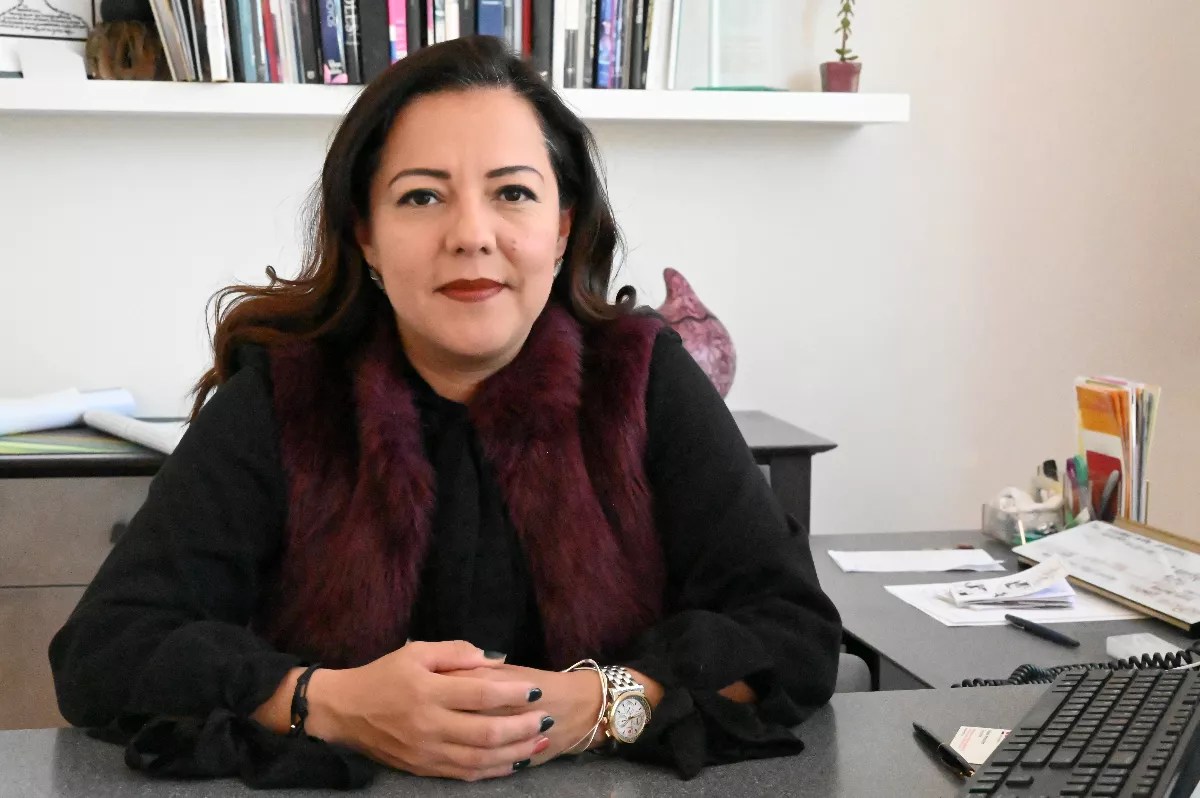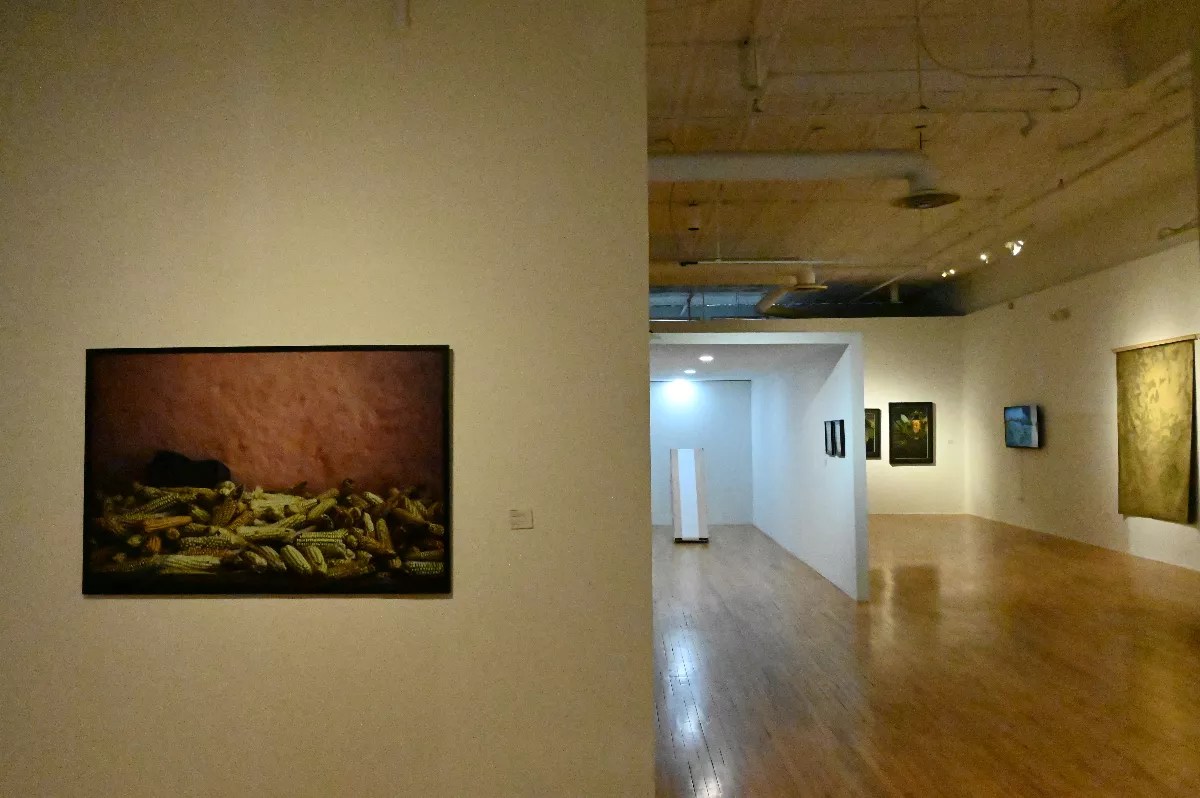
Bennito L. Kelty

Audio By Carbonatix
Museo de las Americas is celebrating its 32nd anniversary this month, and Executive Director Claudia Moran has big plans for the museum devoted to Latino arts and culture.
Moran, who’s been leading the Museo for almost five years, is contemplating expanding both the building’s size and the number of programs it offers. “More artists will have the opportunity to show their work, more conversations will happen, more change will happen, more minds will change and be impacted,” she says. “Museums are very positive and very important, and should be part of our community.”
She envisions the Museo perhaps growing into the properties next door, or maybe upwards; any expansion would be “shaped by what the community needs,” she says, referring not just to the people who already visit the museum, but all residents of metro Denver. “The idea is to have the community tell us what works best. I do want to expand in all areas, though – not just the space, but programs and exhibitions, too.”
After keeping its doors open through the pandemic when larger institutions closed, she says the Museo is well positioned to start considering an expansion. “We became one of the few resources that was able to provide services through programming and exhibitions,” Moran says of that time. “Thankfully, we got enough support to not close because of these funders and the community and individual donors.”
And now she’s looking for even more support. “I have a very ambitious goal,” she acknowledges. “Museo has been here for 32 years. It was founded in 1991, and now I feel that Museo is ready to go to the next phase, into the next step. I would like to start a serious conversation within the community about growing Museo. I would like to expand this institution. I really would like to grow this institution.”
Located at 861 Santa Fe Drive, the Museo’s neon fuschia facade makes it one of the more noticeable landmarks in Denver’s Art District on Santa Fe. Winner of the Best Museum for Locals in the Best of Denver 2023, the Museo hosts celebrations every First Friday, with live music and drinks in its small exhibition space.
Museo exhibits have always focused on people and cultures across Latin America. In 2018, the museum hosted Pachucos, a show on a Mexican-American subculture in the 1940s and ’50s. A show last year applied a contemporary perspective to the legend of La Malinche, a Nahua woman who became a symbol of betrayal for Mexicans and Chicanos after she was enslaved by the Spanish conquistador Hernán Cortés and used as a translator. Other exhibits have focused on topics like resistance, justice, domestic violence, dance and music; one of the current presentations ties together life, death, rivers and corn as pieces of Colombian history. The Museo also brings in international artists: From 2022 through the fall of 2023, it will have hosted art from Colombia, Mexico and Costa Rica; Moran also hopes to bring exhibitions from Bolivia and Latin cultures and countries in the Caribbean.

Museo de las Americas Executive Director Claudia Moran.
Bennito L. Kelty
When Denver hosts the Cities Summit of the Americas, which starts on April 26, Moran will welcome a few of the mayors from Latin American cities at the Museo and look for chances to bring more international artists to the Mile High City, she says.
The next-closest Latin American art museum is in Omaha: El Museo Latino. California has the Museum of Latin American Art in Long Beach, while Chicago has the National Museum of Mexican Art and the International Culture Center of Chicago.
Moran wants the Museo to keep up with the growing Latino population here, and to bring in more visitors and show off more artists. “The Latino community has grown so much in Denver, Colorado, that I would like to have a wider representation,” Moran says. “Now we are in a different place, and that should be directly related to culture and arts.”
The Latino population in Colorado has grown twice as fast as the rest of the state’s population since 2000, according to 2023 numbers from the UCLA Latino Policy and Politics Institute – and the group currently accounts for more than a third of Denver’s population, according to city data.
Although the Museo relies in part on individual donations and corporate grants, the majority of its funding for day-to-day operations comes from government and private foundations, Moran says. For example, the museum receives tax dollars from the state’s Scientific and Cultural Facilities District, and has won grants from the National Endowment for the Arts. Funders that support the Museo include the Bonfils-Stanton Foundation, which focuses on Denver arts organizations; the nonprofit Latino Community Foundation of Colorado; and national foundations such as Bloomberg Philanthropies.
In order to fund any expansion, the Museo would have to grow its fundraising operations, too. The facility currently has an annual budget of about $950,000; Moran says that she’d want to raise money for any growth through a new campaign rather than pull from the operating budget.
And the Museo would have to raise a lot of money, since development in the area is booming. Artist and gallery owner David Griggs – who’s lived in the area for nearly three decades, served as vice president of the La Alma/Lincoln Park neighborhood association and is a former boardmember of the Art District on Santa Fe – applauds Moran’s concept of expanding the Museo, but it “would be very tough,” he says.
“There are fewer and fewer locations and spaces for organizations like Museo to expand into,” he adds. “The district has become very popular. It’s been noticed by developers, and they’re grabbing spaces as quickly as possible. Arts organizations can’t compete with that, so that’s ambitious.”
The Chicano Humanities and Arts Council, which was founded in 1978 and had two different homes on Santa Fe Drive, was priced out of the Santa Fe art district in 2020. The real estate prices in Denver are “outrageous,” says CHAC Executive Director Brenda Gurule. “Downtown Denver would be a hard place for anyone to expand with the way prices are right now. But if the Museo is able to do it, I think that’s great.”
CHAC is now based in Lakewood, right by Casa Bonita. “We’re doing well in our new location; it’s a nice spot,” adds Gurule. “But we’re building back up little by little.”

Museo de las Americas is currently showing the exhibition Colombia: The Corn, The River and The Grave.
Bennito L. Kelty
“Santa Fe Drive is being bought up by developers. It will disappear if we are not able to hold and expand our spaces,” says Tony Garcia, longtime artistic director of Su Teatro, which earlier this year paid off the mortgage on its space at 721 Santa Fe.
“Museo de las Americas is one of the cornerstones of the entire Latino community. … Su Teatro would absolutely be responsive to the Museo’s vision,” Garcia continues. “Owning and expanding our footprint is one of the strongest ways that we can combat gentrification. If our footprint continues to shrink, so will our ability to respond to the community’s needs.”
“We’ve been here. We were one of the anchors to support the development of the Art District on Santa Fe,” Moran points out. “We want to make sure this institution will stay longer in this space, where it’s a landmark already. For many people, it’s considered a cultural treasure.”
The nearby Latino Cultural Arts Center of Denver champions the idea of creating a bigger footprint. It’s now renovating buildings in the neighborhood into galleries, workshops, classrooms and a cafe as part of its Las Bodegas project. LCAC describes it as “the first major investment in Latino art, culture and education in Colorado in over thirty years.” Las Bodegas is slated to open in 2024; it’s already received about $3.4 million from funders, including almost $2 million from the State of Colorado.
Convincing donors to get on board with the idea of expanding the Museo will take “a little bit of studying first and a good analysis,” Moran says, and then “talking to everyone” – including politicians, neighborhood residents, the Latino community and other arts organizations.
Moran has already started having those conversations with potential funders.”You want to get a sense of what they think or of how they see you,” she says. “Sometimes you think you may know how they see you, but until you ask, you don’t really know.”
Funding “has always been our struggle,” Moran adds. “We always have to keep fighting for funding. We have to convince funders this is important, show them we’re talking about mental health, well-being, cultural pride, making your citizens better citizens. Sometimes exhibitions and art will transform a mind.”
At the end of the day, Moran’s chief focus is still those exhibitions and the day-to-day operations of the Museo. A serious expansion “requires so many commitments and compromises,” she adds. “I’m planting the seed, and I’m spreading the conversation around. The idea of growing has been there, but I see it more and more as something that needs to happen.”